By Jenny Benbrook Home service contractors put serious money into field service management (FSM) software and other digital tools, expecting them to streamline operations, boost profits, and create a better experience for both technicians and customers. But too often, they fall into the “perceived efficiency” trap, assuming that just having the software in place will Read more
Guest Blog

By Jenny Benbrook
Home service contractors put serious money into field service management (FSM) software and other digital tools, expecting them to streamline operations, boost profits, and create a better experience for both technicians and customers. But too often, they fall into the “perceived efficiency” trap, assuming that just having the software in place will deliver results.
The reality? Without a strategic approach to budgeting, implementation, training, and ongoing management, that investment can become an expensive headache instead of a game-changer. Technology should serve the business, not the other way around. The right tools, aligned with business goals and managed effectively, can maximize efficiency, improve workflows, and drive real revenue growth.
Why Implementation is Just the Beginning
FSM platforms like ServiceTitan and FieldEdge are powerful tools that can transform a business—when properly set up, used, and maintained. These platforms provide insights into operations, from tracking inventory and equipment maintenance to optimizing technician scheduling and following up on unsold estimates.
Take unsold estimates as an example. Contractors spend a fortune on marketing, lead generation, and technician dispatch just to get an estimate in front of a potential customer. But if that estimate isn’t followed up on, it’s money wasted. Leveraging FSM software to track, automate follow-ups, and increase close rates can unlock millions in revenue, turning lost opportunities into booked jobs.
But software success doesn’t stop at implementation. Without a proper training plan, standardized workflows, and dedicated oversight, even a well-implemented system can fall apart. Poor training leads to inconsistent usage, undocumented workflows create confusion, and a lack of tech stack management causes inefficiencies that negate the software’s benefits. A tool is only as good as the process it supports. If you don’t have a plan, technology just becomes another expense.
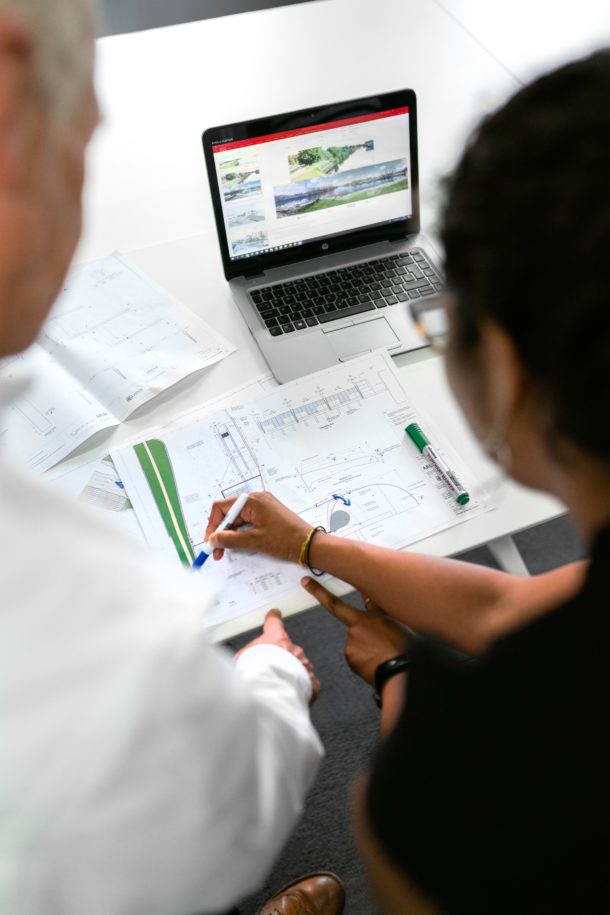
Common Roadblocks to Long-Term Software Success
Many contractors struggle with software adoption and optimization due to several key challenges:
Time Commitment: Learning a new platform takes time, and so does training a team to use it correctly. Without dedicated effort, even the best software won’t deliver its full potential.
Change Resistance: Asking a seasoned team to adopt new workflows can be tough. People get comfortable with how they work, and changing that, even for the better, can be met with pushback.
Lack of a Clear Plan: Many businesses invest in software without defining what success looks like. Without clear goals, implementation lacks direction, and the software’s value isn’t fully realized.
No Dedicated Tech Stack Management: Software is not a one-and-done purchase, it requires an ongoing financial commitment for optimization, training, and troubleshooting. Without a dedicated resource to manage the tech stack, inefficiencies and outdated workflows can creep in, reducing ROI.
Overwhelm from Too Many Tools: Contractors are drowning in technology options, with too many tools and no strategy. The greatest risk isn’t adopting technology too quickly, it’s adopting it without intention.
Getting the Most Out of Your Investment
To avoid these pitfalls, contractors should approach software implementation and long-term success with a structured plan. Here’s how to start:
Set Specific Goals – Identify what you want to achieve with your software. Are you trying to increase technician efficiency? Reduce inventory waste? Close more estimates? Improve customer communication? Define success in measurable terms.
Dedicate Financial Resources – Contractors should allocate 2-5% of projected annual revenue toward technology. This budget should not only cover software licensing but also implementation, training, ongoing support, and a dedicated internal or external resource to manage the tech stack. A clear roadmap prevents wasted time and money. Technology adoption should be intentional, seamless, and impactful.
Develop a Standardized Training Plan – A good implementation won’t matter if your team doesn’t know how to use the software correctly. Learning technology is not a one-and-done activity. Establish a structured training process, provide documentation, and offer continuous learning opportunities to keep employees up to speed.
Document and Maintain Workflows – Standardized processes ensure that every team member is using the software consistently. Powerhouse Consulting Group provides a structured, step-by-step approach to technology adoption with a technology playbook to ensure proper implementation, set expectations, process documentation, training, and more.
Invest in Ongoing Optimization – Success requires ongoing optimization, not just a one-time setup. Technology changes daily, and businesses need structured validation, tracking performance, optimizing workflows, and driving measurable results over time.
Why Professional Guidance Pays Off
Contractors don’t expect customers to install HVAC systems or electrical panels without professional expertise, so why should software be any different? FSM consultants spend thousands of hours mastering these platforms, learning the best configurations, workflows, and integrations to maximize their value.
Trying to implement a major system without expert help is like wiring your house without an electrician. You might get some lights to work, but it won’t be safe, efficient, or built to last. Powerhouse Consulting Group is the trusted guide for technology adoption, ensuring that tools are used efficiently and effectively. We don’t just vet and implement tools; we teach contractors how to maximize their value.
Final Thoughts
The future of the trades isn’t just about fixing what’s broken, it’s about anticipating what’s next. The industry is shifting toward data-driven decision-making, and contractors who strategically implement technology now will lead in the next 5-10 years. Investing in technology isn’t just about tools, it’s about building a scalable business.
Powerhouse isn’t just a consultant; we are a strategic partner helping contractors scale and thrive. Our hands-on, business-first approach ensures that contractors get real value from their technology investments. There is no easy button, but contractors who put in the work and follow the right process will build sustainable, profitable businesses.

Jenny Benbrook is the founder and CEO of Powerhouse Consulting Group. Drawing from more than 20 years of experience in the skilled trades, Jenny provides strategic coaching and consultation for home service businesses seeking to make the most of their software investments. Powerhouse Consulting Group is the first and only ServiceTitan Titanium Partner, and also provides in-depth expertise regarding FieldEdge. More information is available at mypowerhouse.group.
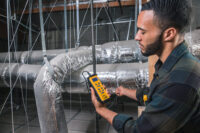
Tracking down leaks quickly and accurately has always been one of the biggest challenges in plumbing. Traditional methods often involve trial and error, cutting into walls or floors just to locate the problem. Not only is this time-consuming, but it also leads to unnecessary property damage. Fortunately, professional plumbers now have access to advanced leak Read more
Tracking down leaks quickly and accurately has always been one of the biggest challenges in plumbing. Traditional methods often involve trial and error, cutting into walls or floors just to locate the problem. Not only is this time-consuming, but it also leads to unnecessary property damage. Fortunately, professional plumbers now have access to advanced leak detection tools that make the process faster, more precise and far less invasive.
Today’s modern techniques eliminate guesswork, allowing tradesmen to identify leaks before they cause significant damage. Whether working in homes, businesses or large-scale municipal plumbing systems, staying ahead of these advancements gives professionals the edge they need.

Why Advanced Leak Detection is a Game-Changer
Integrating advanced leak detection tools into daily operations offers plumbers a major advantage. These cutting-edge technologies help tradesmen:
- Diagnose Leaks Faster: Finding leaks quickly leads to faster repairs and higher customer satisfaction.
- Minimize Property Damage: Non-invasive techniques prevent unnecessary destruction of walls, floors and other structures.
- Reduce Costs: Early leak detection prevents severe water damage, reducing repair expenses for homeowners and businesses.
- Build a Stronger Reputation: Offering state-of-the-art solutions positions plumbers as industry leaders and trusted experts.
For plumbing professionals looking to improve efficiency, accuracy and customer trust, investing in these technologies is a smart move.
Innovations in Leak Detection
Thermal Imaging Cameras: Finding Leaks Without Damage
Thermal imaging has changed the way leaks are detected, allowing plumbers to locate hidden moisture without cutting into walls or floors. These cameras detect temperature variations, highlighting areas where water is escaping.
By speeding up diagnosis and reducing property damage, thermal imaging improves efficiency and prevents minor leaks from becoming costly disasters. Whether dealing with radiant heating systems, concealed pipes or underground water lines, this non-invasive technology provides a smarter way to pinpoint leaks.
Acoustic Leak Detectors: Finding Leaks by Sound
For pressurized plumbing systems, acoustic leak detectors provide unmatched precision. These tools use sensitive microphones to amplify the sound of water escaping from pipes, even when hidden behind walls or underground.
Acoustic detection reduces disruption by identifying leaks without unnecessary digging. It’s highly effective for residential plumbing, gas lines and large-scale municipal systems, where early detection prevents excessive water loss and expensive repairs.
Drone Inspections: Reaching New Heights in Leak Detection
Drones equipped with high-resolution cameras and infrared sensors are changing large-scale plumbing inspections. They provide detailed images of rooftops, water mains and underground systems, helping plumbers detect leaks faster.
By eliminating risky manual inspections and improving accuracy, drones enhance maintenance efforts while reducing downtime. Municipal water departments, industrial facilities and commercial properties are already benefiting from this cutting-edge approach.
Hydrostatic Pressure Testing: Detecting Leaks in Water and Sewer Lines
Hydrostatic pressure testing is a powerful tool for detecting leaks in water and sewer lines. By pressurizing a pipe system with water and monitoring pressure levels, plumbers can quickly determine if there is a leak. If the pressure drops, it signals a problem in the system.
This method is highly effective for testing underground pipes, slab leaks and sewer lines without unnecessary excavation. By identifying leaks early, hydrostatic testing helps prevent extensive damage and costly repairs.
Smart Leak Detection Sensors: Real-Time Monitoring for Early Detection
Smart leak detection sensors are revolutionizing the plumbing industry by providing real-time monitoring for homes and businesses. These sensors are installed near potential problem areas – such as under sinks, near water heaters and along pipelines – to detect moisture and alert homeowners or maintenance teams immediately.
With Wi-Fi connectivity and app-based notifications, these sensors provide an added layer of protection by catching leaks before they become major issues. They are particularly useful in commercial buildings, apartment complexes and industrial facilities where early detection can prevent significant water damage and financial loss.
Smarter Leak Detection for Modern Plumbing
Finding leaks no longer has to mean guesswork and unnecessary damage. With smarter, more precise detection methods, plumbers can diagnose issues faster, cut down on costly repairs and provide a seamless experience for customers. These advancements aren’t just about efficiency – they’re about setting a higher standard for service.
By embracing cutting-edge technology, plumbers can stay ahead of the competition, build trust with clients and tackle even the toughest leaks with confidence.
AUTHOR BIO: Leslie Erickson is the Marketing Manager at Air Mechanical. She has been working for Air Mechanical for most of her life and specializes in marketing. She is dedicated to bringing customers the best experience possible for their family and their homes.
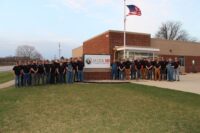
Dozens of skilled trade workers from across Illinois recently gathered at United Association Local 149’s training center in Savoy, Illinois, for the prestigious Illinois Pipe Trades Association Committee on Training and Education (COTE) contest. Top apprentices, who earned their place by winning local competitions, put their expertise to the test through rigorous written exams and Read more
Dozens of skilled trade workers from across Illinois recently gathered at United Association Local 149’s training center in Savoy, Illinois, for the prestigious Illinois Pipe Trades Association Committee on Training and Education (COTE) contest.

Top apprentices, who earned their place by winning local competitions, put their expertise to the test through rigorous written exams and hands-on challenges. Competing in plumbing, welding, pipefitting, sprinkler fitting, and HVAC, they tackled complex projects and real-world scenarios, demonstrating the highest level of skill and craftsmanship.
“The statewide apprenticeship competition at Local 149’s newly expanded training center was a tremendous success, showcasing the talent of our apprentices and the strength of our commitment to training excellence,” said Matthew J. Kelly, Business Manager & Financial Secretary-Treasurer of Plumbers & Pipefitters Local 149. “Funded entirely by our dedicated members, our state-of-the-art facility ensures every apprentice receives top-tier education and hands-on experience. This competition is the pinnacle of their five-year journey, proving their expertise and preparing them for success as journeypersons. Local 149 is proud to invest in the future of our industry and the success of our apprentices.”

The event also drew strong industry support, with manufacturers like Milwaukee Tool and NIBCO backing the competition. “NIBCO was proud to sponsor the 2025 Illinois State Pipe Trades Apprenticeship Contest, continuing our strong partnership with UA plumber and pipefitter unions,” said Aaron Kilburg, NIBCO Commercial Sales Manager. “We support these skilled professionals with world-class products and training programs that advance craftsmanship, safety, and innovation across our industry. Congratulations to this year’s outstanding competitors and winners.”
The competition culminated in an awards ceremony at the I-Hotel in Champaign, where the top performers in each trade discipline were recognized. State champions will advance to the regional competition in Iowa, with hopes of earning a place in the international finals this summer.

Last year’s Illinois plumbing champion, Andrew Hall of Local 149, proved the strength of Illinois’ training programs by winning the international plumbing title—setting a high standard for this year’s competitors.
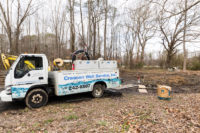
Water is one of our most valuable resources, yet traditional plumbing systems often lead to excessive waste. As the demand for sustainable building practices grows, professionals across the trades are adopting smarter, more efficient plumbing solutions to conserve water and reduce environmental impact. From low-flow fixtures to rainwater harvesting systems, modern plumbing innovations are transforming Read more
Water is one of our most valuable resources, yet traditional plumbing systems often lead to excessive waste. As the demand for sustainable building practices grows, professionals across the trades are adopting smarter, more efficient plumbing solutions to conserve water and reduce environmental impact.
From low-flow fixtures to rainwater harvesting systems, modern plumbing innovations are transforming how buildings manage water. Here, we’ll explore key advancements that improve efficiency, meet environmental regulations and support long-term sustainability.
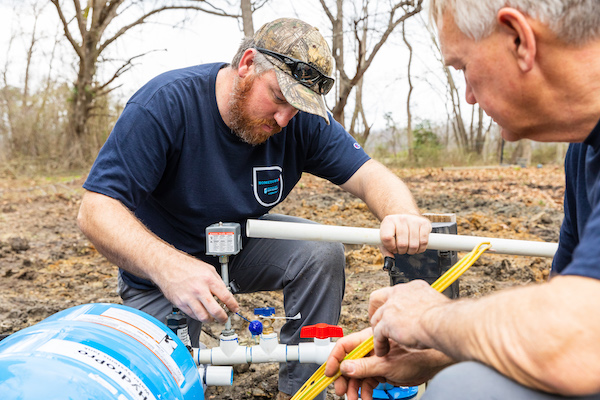
Water-Efficient Fixtures: Reducing Consumption Without Sacrificing Performance
One of the simplest and most effective ways to enhance sustainability in construction is by installing water-efficient fixtures. Low-flow toilets, showerheads and faucets significantly reduce water usage without compromising performance. These fixtures are designed to maintain strong water pressure while using less water per flush or flow cycle.
Beyond traditional fixtures, advanced sensor-activated faucets and dual-flush toilets offer even greater efficiency. These innovations allow users to control water flow precisely, preventing unnecessary waste.
Many modern buildings are also incorporating smart plumbing systems that adjust water usage based on occupancy, further improving conservation efforts. By upgrading to these high-efficiency fixtures, buildings can significantly cut down on water consumption and reduce utility costs over time.
Rainwater Harvesting: A Smart Solution for Water Reuse
Rainwater harvesting systems provide a sustainable alternative to traditional water sources by capturing and storing rainwater for non-potable uses such as irrigation, flushing toilets and cooling systems. This method reduces demand on municipal water supplies and lowers utility costs for homeowners and commercial properties.
Plumbers design and install these systems, focusing on effective filtration and distribution. With advancements in water treatment technology, more buildings are incorporating rainwater for potable uses, making sustainability efforts even more impactful.
By implementing rainwater harvesting in new builds or remodeling projects, tradesmen contribute to long-term water conservation while offering clients cost-effective, eco-friendly solutions. These systems are particularly valuable in regions with inconsistent rainfall, helping buildings maintain self-sufficiency.
Greywater Recycling: Repurposing Water for Maximum Efficiency
Another effective strategy for sustainable construction is greywater recycling. Greywater – wastewater from sinks, showers and laundry – can be filtered and reused for purposes like landscape irrigation and toilet flushing.
Plumbing systems designed for greywater reuse divert water before it reaches the sewer, treating it through basic filtration processes. This reduces reliance on freshwater sources and minimizes wastewater discharge, making buildings more sustainable.
Professional tradesmen installing these systems must adhere to local regulations and maintain proper filtration to prevent contamination. That said – with the right setup – greywater recycling can cut residential water use substantially, offering significant savings while promoting conservation.
Leak Detection and Smart Water Management
Advanced leak detection technology helps prevent unnecessary water waste by identifying leaks early. Smart water meters and sensors monitor usage patterns and alert property owners to irregularities, allowing for quick intervention.
For tradesmen, integrating these technologies into new builds or renovation projects provides clients with real-time control over their water consumption. Smart plumbing systems can also automate water shutoff in case of major leaks, protecting properties from costly damage while enhancing efficiency.
These innovations are especially beneficial in Utah kitchen remodeling projects, where sustainability is becoming a key focus. Upgrading kitchen plumbing with smart leak detection and water-efficient fixtures not only conserves water in the region, but it also increases long-term value for homeowners.
The Future of Sustainable Plumbing
As building codes and environmental regulations continue to evolve, tradesmen must stay ahead of sustainability trends. By embracing these innovations, tradesmen can enhance their expertise, offer more value to clients and play a vital role in shaping the future of sustainable construction.
With smart plumbing solutions, buildings become more efficient, resilient and environmentally responsible – showing that sustainability and performance can go hand in hand.
AUTHOR BIO: Bryant Ballman is the Owner of Bryant Construction, a well-established Utah general contractor specializing in remodels, basement finishes and custom builds. With over 35 years of experience in the general contracting industry, he brings keen attention to detail and a commitment to delivering high-quality craftsmanship. Ballman’s expertise ensures that every project is completed to exacting standards, whether it’s transforming a space or constructing a new one from the ground up.

Mechanical Hub Media attended the World of Concrete (WOC) trade show in Las Vegas this week has been an enlightening experience, offering a comprehensive view of the latest advancements and trends in the concrete and masonry industries. Not too mention, it’s the show to see all the power tool manufacuters in one place, with their Read more
Mechanical Hub Media attended the World of Concrete (WOC) trade show in Las Vegas this week has been an enlightening experience, offering a comprehensive view of the latest advancements and trends in the concrete and masonry industries. Not too mention, it’s the show to see all the power tool manufacuters in one place, with their new product launches.
Held at the Las Vegas Convention Center from January 20 to 23, 2025, WOC 2025 marked its 51st anniversary, solidifying its reputation as the premier international event dedicated to these sectors.
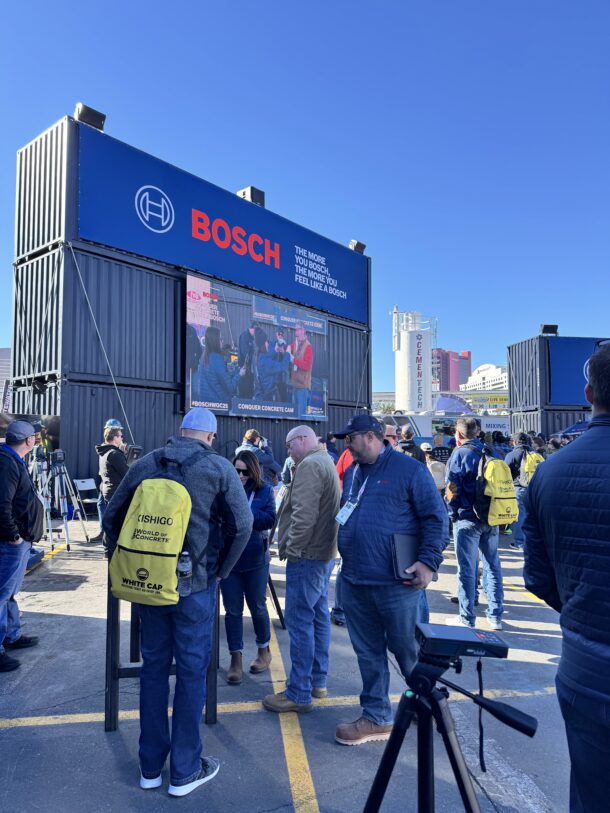
Event Overview
The event is structured into two main components:
- Education Sessions (January 20-23): These sessions provided in-depth knowledge on various topics, including new technologies, safety protocols, and business strategies. Industry experts led seminars and workshops, fostering a collaborative learning environment.
- Exhibits (January 21-23): The exhibition halls were bustling with over 1,500 exhibitors showcasing innovative products and services. From cutting-edge machinery to sustainable materials, the exhibits offered a glimpse into the future of the industry.

Key Highlights
- Innovative Product Launches: Many companies unveiled new products designed to enhance efficiency and sustainability. For instance, advancements in concrete admixtures promise to improve durability while reducing environmental impact.
- Live Demonstrations: The outdoor exhibit areas featured live demonstrations of equipment and techniques. Witnessing these applications in real-time provided practical insights into their benefits and implementation.
- Networking Opportunities: WOC facilitated connections among professionals from around the globe. Various networking events allowed attendees to exchange ideas, discuss challenges, and explore potential collaborations.
- Educational Seminars: Topics ranged from the integration of digital technologies in construction to the latest safety standards. These sessions were instrumental in broadening understanding and staying updated with industry best practices.

Conclusion
Attending the World of Concrete 2025 was a valuable experience, offering exposure to the latest industry innovations and fostering professional growth. The combination of educational sessions, product exhibitions, and networking opportunities provided a holistic view of the current and future state of the concrete and masonry sectors. For professionals committed to staying at the forefront of the industry, participation in WOC is highly recommended.
For more information on World of Concrete visit www.worldofconcrete.com.
